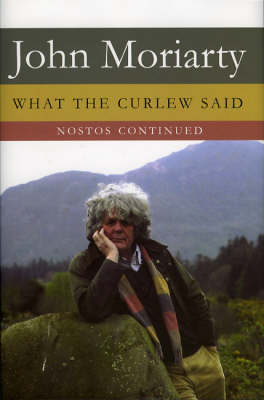
What the Curlew Said: Nostos Continued
By: John Moriarty
Publication Date: September 2007
€25.00
What the Curlew Said: Nostos Continued by John Moriarty
‘Now again I live in a river-mirrored house, the house a cottage, and the river that mirrors it broadening out twice a day into an estuary lake fished by otters and herons and, when the salmon are running, by a sole old seal. One of the herons I know. Screeching and croaking an angelus that announces only himself, he comes in flying low over the water and, the rhetoric of his wingfolding perfect, he stands there, outstandingly, poised for the kill. Young though he is in this lifetime, he is old in incarnations. Night not in them even when he closes them, his eyes are for opening outwards only. Outwards always. Even in sleep. Him especially. Him looking so priestly, so poised for death-dealing in his chasuble of fine feathers. Him, if I could, I would talk to.’ – John Moriarty, What The Curlew Said
What The Curlew Said is an autobiography, a sequel to Nostos, concluding the story of John Moriarty’s life in Connemara during the 1980s and subsequent return to his native Kerry. He writes with compelling detail about his time at Roundstone and environs, restoring gardens at Leitirdyfe House and Lisnabrucka, and building his own house at Toombeola. He reflects on his Kerry childhood and the death of his father; he describes his adopted family, a sortie to Dublin for Christmas, the writer Tim Robinson, and his neighbourhood and community; he celebrates the returned pine martens and the fauna and flora of a historic landscape; he undertakes a lecture tour in Canada organized by his former students; and throughout he engages with the immensities of the natural and spiritual worlds that form his habitat.
In What The Curlew Said, this posthumously published work, completed just weeks before his death, John Moriarty calls to account the literatures and legacies of European thought made manifest in the western extremities of Ireland. They bore witness to his own inner and outer journey, now documented in this compelling, writerly masterwork.
ACCLAIM FOR NOSTOS:
‘This is a mighty book in every sense of that mighty word mighty. This book is almost seven hundred pages, but that is a straw compared with the scale of its contents – its stories, its poems, its memories, its prayers, its laughter, its tears, its songs, its passions, its dinnseanchas, its thought, its insight, its fun, its madness, its celebrations, its terrible suffering, its amazing physical presence, its amazing spirituality. I am indulging in no idle hyperbole when I say that this is one of the most remarkable autobiographies I have ever read in my entire life. Every household in Ireland should have a copy of this magical book.’ – Paul Durcan
‘The Classical, Eastern and Amer-Indian legends that have informed Moriarty’s life are recreated or re-enacted in this deeply personal document, which is rich in encounters with the physical world and tender episodes of love and loss.‘ – Tim Robinson
‘Quitting the myth of rationality for the deeper rationality of ancestral myths, with an enlightenment as searching as the double quest – Creation and Fall – of the Bible and the Buddha, John Moriarty’s masterwork Nostos tells the story of his own life and the life of all those stories which our species has been sharing since the first annals of the primal savannah. It is a great book this, the greatest Irish book since Ulysses, and its subject is the same august and Augustinian one – the City of Man and the City of God.’ – Aidan Carl Mathews
‘Moriarty is a Kerryman who has walked the earth listening like a water diviner for rumblings underneath. And everywhere he goes he finds the same thing. That human beings in our grey modern clothes are cut off from the earth. Cut off from our deepest psychic energy. And this sense of loss is something he addresses with a wide variety of texts, from every corner of the globe, and almost every period of history. In one sense his achievement is to offer an insight into modern Western loneliness. That is the philosopher in him. But there is the poet as well. And the eclectic collection of stories from all over the globe and every part of history, rendered to us in the author’s very original voice, is itself an act of poetry. In Nostos Moriarty has surpassed all his previous achievements. Because it is in the recording of his life, that his passionate imagination finally makes sense – and here he has recorded his life expansively and clearly and movingly. It is written in exquisite Irish-English, it’s a unique voice, and it sings through in every page of a beautifully made book.’ – Michael Harding, Sunday Tribune
‘Moriarty’s erudition is immense … his words are shamanic, brushed with sparks of mystic fire … Nostos is a remarkable, paradoxical book, biblical in scope and shape.’ – Gerry McCarthy, Sunday Times
ABOUT THE AUTHOR
JOHN MORIARTY was born in Kerry on 2 February 1938 and died there on 1 June 2007. He was educated at St Michael’s College, Listowel, and University College Dublin. He taught English literature at the University of Manitoba in Canada for six years, before returning to Ireland in 1971. His books include Dreamtime (1994); the trilogy Turtle Was Gone a Long Time: Crossing the Kedron (1996), Horsehead Nebula Neighing (1997) and Anaconda Canoe (1998); Nostos, An Autobiography (2001); Invoking Ireland (2005); Night Journey to Buddh Gaia (2006); Serious Sounds (2007); What The Curlew Said (2007); and One Evening in Eden (2007), a boxed CD collection of his talks, stories and poetry.
| ISBN | 9781843511243 |
|---|
| Weight | 1 kg |
|---|---|
| Dimensions | 240 × 160 mm |
| Publication Date | September 2007 |
| Format | Hardback, 376pp |
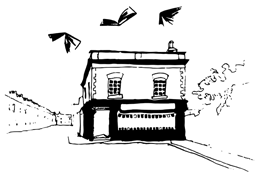
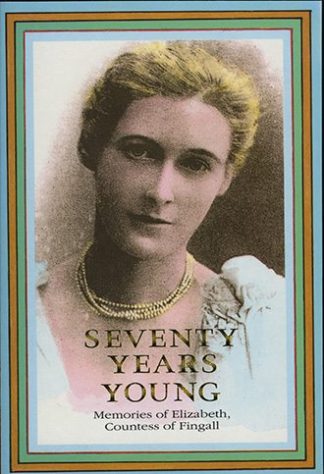
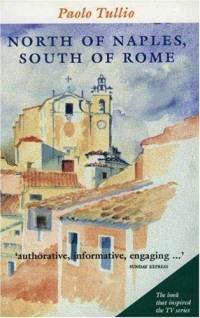
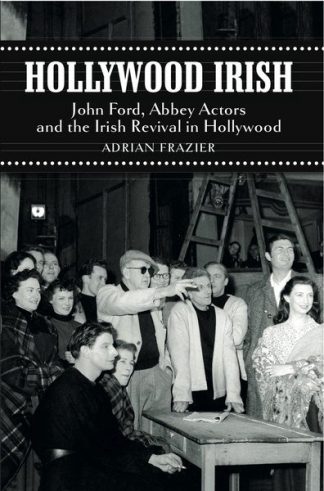
Lilliput Press –
“After reading four or five– they do run together– of this late Kerry shaman’s mythopoeic effusions, this last volume, written not long before his death from cancer, does not add much to his voluminous and often bewilderingly esoteric texts. He’s surely blessed in having a patient editor at Dublin’s fine Liliput Press, Anthony Farrell, who sponsored his works for two decades. That’s why I was a bit surprised to find out in “Curlew” that another of his final books, “Night Journey to Buddh Gaia,” had been by Farrell rejected as more of the same-old same-old. This criticism appears to hold true for whatever was published as “Night,” and like his other (yes, he does write a lot) recent work, the somewhat more focused by default “Invoking Ireland,” Moriarty keeps spiralling back to the constant themes that since his debut “Dreamland” have occupied his mind.
As he puts it early on in this closely printed 375 pp. tome: he makes sure “that I do not relapse in to European common sense.” (43) Readers may concur in this judgement, if not for the same reasons he gives. I admire much of his thought, but his manner of repetition, endlessly and idiosyncratically, may appeal more to followers of Blake, Yeats, the Upanishads, or Native American storytelling modes. He hates Aristotelian logic that insists a thing cannot be both A and not-A simultaneously. He urges “people who live and who think extramurally,” looking beyond the barriers towards whats’ over Hadrian’s Wall, what lurks in Celtic, Asian, and other indigenous remnants of hearing “what the curlew said.” Reacting against our Western need to add it all up, he urges us to remember the magic that led us conceive the mathematics. Rather than pinning down perception, he advocates apperception, staying in the moment. Surprisingly, Robert Pirsig’s “Zen & the Art of Motorcycle Maintenance” remains unmentioned, as does Teilhard de Chardin and the work done by physicists with the anthropic cosmological principle. I’d have appreciated such links to congenial minds. On the other hand, Moriarty possesses the deep-knowledge to penetrate the Irish language, Sanskrit and Tibetan texts, and the shamanistic aura as one who edges near the abyss in his quest over forty years.
Answering his book’s title: “I think he didn’t say anything at all but he said it in such a way that we have now no need, nor had we ever, to import Zen Buddhism into Ireland. It was already here before our people came here.” (74) Amidst so much philosophizing, he can break into welcome clarity. He conjures up a wonderful description of his last house, near Torc Mountain in his native Kerry, where he hoped to establish a “Sli na Firinne,” a “way of truth,” as a hedge school for mystics like himself. As only a farm boy could, he perceives the oneness in the peace surrounding him and the violence of foxes plundering a wren’s nest to devour its “still bald chicks, they themselves, every time their mother returns with a mouth full of death, seeming to be little more than luridly shrieking voracities for insects and grubs.” (297) He adds: “To survive at all on such a day I’d have to forgo being a self: where normally I would say ‘I see’, now in self-abeyance I would say ‘seeing is’.” He breaks down the “subjective-objective divide” as “a disposable piece of mental machinery, the mechanism of our alienation, turning us into spectators.” He concludes: “The fourteenth way of looking at a blackbird or at Torc Mountain is to remove the one who looks from the looking.”
I do wish in this sequel to his “Nostos” autobiography that he’d have told us more about his time in Connemara near Roundstone. Surely his conversations with cartographer-chronicler of that area and the Aran Islands, Tim Robinson, or his talks with the late local priest, the psychologist John O’Donahue, might have enlivened many pages. Moriarty’s reticence, given his effusiveness, surprises me. An author told me that in his own meeting with Moriarty, it happened to come up by chance that he had known Ted Hughes; in “Curlew,” while he cites a poem by him, there’s no mention of any personal connection. Similarly, he’s in Ireland here but appears too rarely grounded in the land; his affectionate exchanges with a few loved ones do soften the impact of what can be a relentlessly serious recounting of his mental and spiritual struggles, and I only wish he’d have shared more of such. He needs to humanize himself for his readers who never had the chance to hear him speak.
Anyhow, this is what we have to remember him by. He came a long way from a Kerry farm and the Irish Catholic childhood once so common to his native land. He observes, contrasting himself at twelve with a neighbor girl now: “At Mary Margaret’s age we were vastly knowledgeable, and knowing, so much so that if the entire adult population suddenly died out one night, we would be out there driving cows to milk them, we could take over.” (226) He laments the diminishing dream of a spiritually renewed Ireland that the rebels and revivalists failed to establish as the nation which rapidly forgets its heritage; it must have been painful for him to live there while so much changed, even as he too left behind his Christian conventions in search of a Jesus better suited to the empty tomb, akin to the Buddha contemplated on his empty throne, as a more congenial, apophatic presence for us.
This retreat from the quotidian into the less travelled roads within cost him. He does not reveal much, but you sense he teetered near the edge for a while before recovering in rural Ireland in the 1980s and 90s. There’s little consideration of modern Irish in the remote coastal places he lived, where its ghosts can still be sensed in speech if not its everyday presence, but he does provide a sadly appropriate insight. He compares the English “they are buried” with the Irish “Ta sid curtha”– “They are planted.” New growth follows in a new season. Likewise, “we have laid them to rest” locks us down, while “Ta sid imithe ar Shli na Firinne” gives us the marvellous hope that the dead “have set out on the Trail of Truth,” or as he renders it better: “They have set out on the adventure of their immortality.” (63)
Only much later do we find, as he learns, that he is dying of cancer as he writes this book. He accepts it with admirable grace, noting that three decades earlier he had a lot of bad karma still to sweat out. However, he readies himself with the words of Al Hallaj: “Between me and Thee there is an ‘I am’ that torments me. Ah! through Thy ‘I am’ take away my ‘I am’ from between us both.” (335) He differentiates physical from mystical death. “Physical death doesn’t remove the obstructing ‘I am’. Only God does that for us.” He awaits his “final transition” with remarkable courage and admirable dignity. He anticipates desire, longing, and yearning to lose himself in Oneness. “In comparison with all of this, physical death is but an episode, many times incurred, in a continuing adventure.”
This is a book that like any other one from Moriarty annoyed me but challenged me. He produces many of the same tales from Melville or Black Elk or Cu/ Roi or the Grand Canyon that I’ve read before in his works. He admits, here, his own difficulty for readers, but he insists, it seems, to follow his own stubborn path to Truth. His style may not please those wanting more rational, linear, or Aristotleian structures. He’s circling and wandering through his inner journeys, and on paper they prove more a Borgesian labyrinth than a classical paradigm. Still, his shortcomings for those of us expecting more academically mimetic production parallel his refusal to go along with the philosophical career he once attempted. He proves his rebellion against the norms by his own trailblazing, for the few daring to follow. His works continue to perplex me, but perhaps they will endure in years to come when more theoretically trapped, less imaginative, scholars turn dated and dull.
One of the last sentences in this rambling, disorienting, eccentric, frustrating, and intermittently rewarding and profound collection of thoughts and stories sticks with me. “I go for broke, leaving all that I naturally and supernaturally am, leaving all I in any way am, behind me in trackless dark infinity. Over to you, God.” (376) His sequel to “Nostos” reveals his readiness for a true “homecoming.” JOHN MURPHY